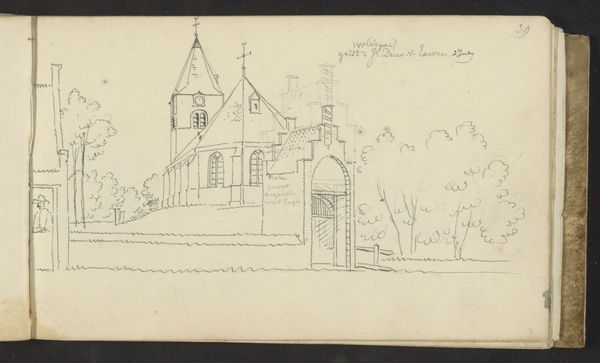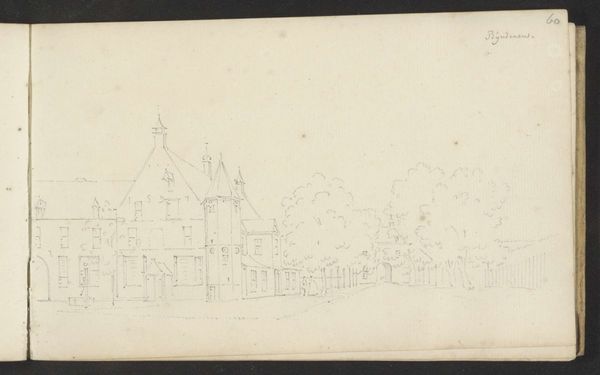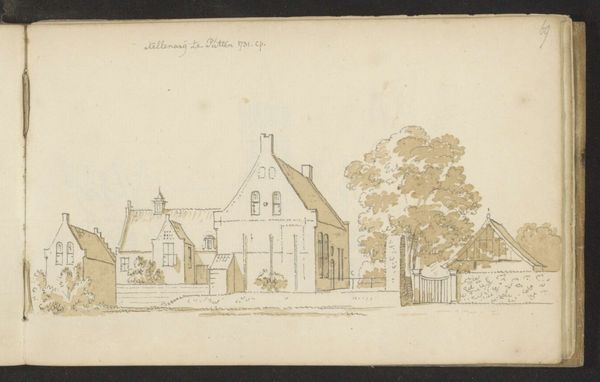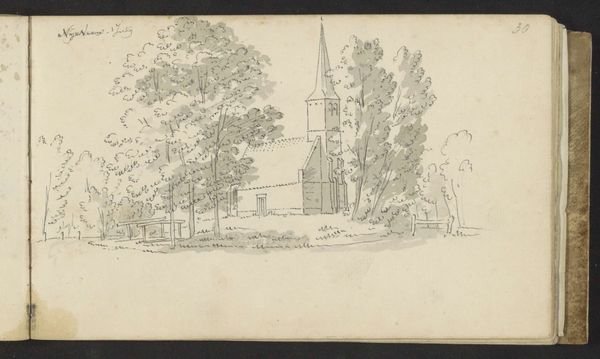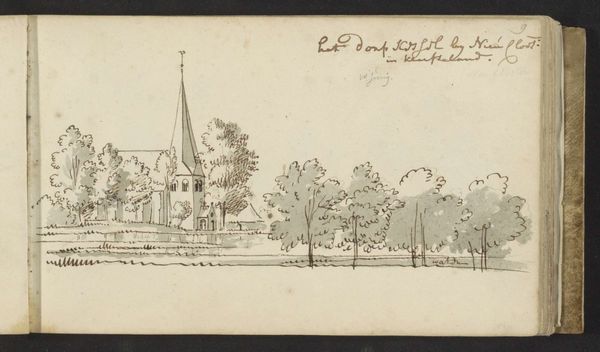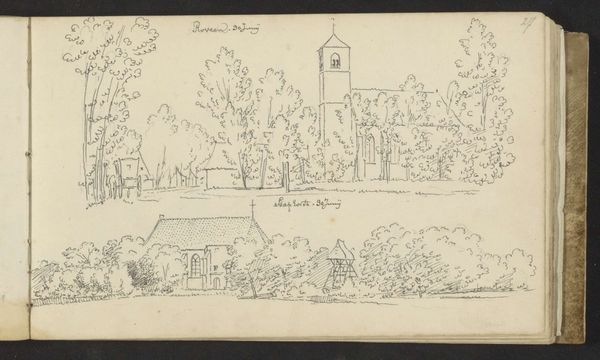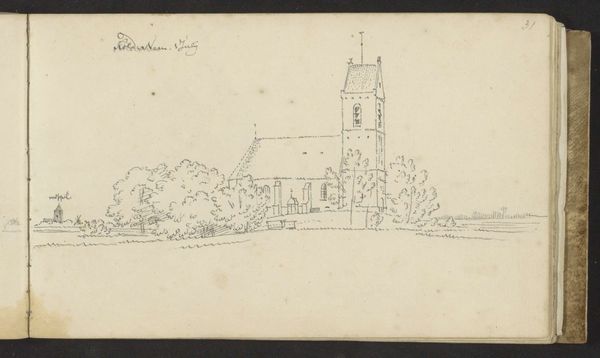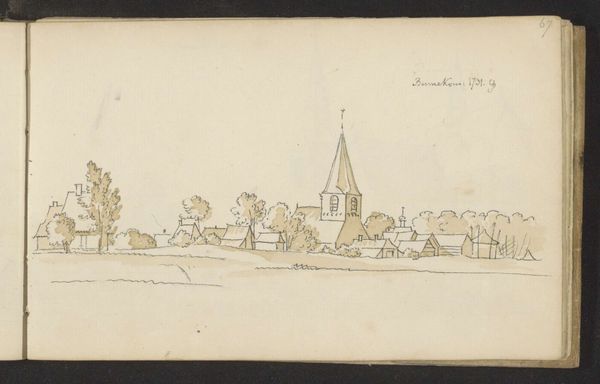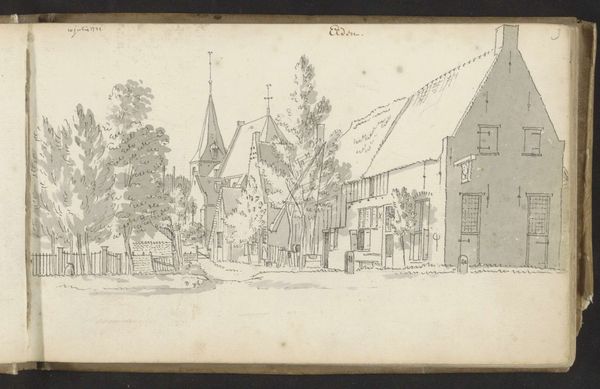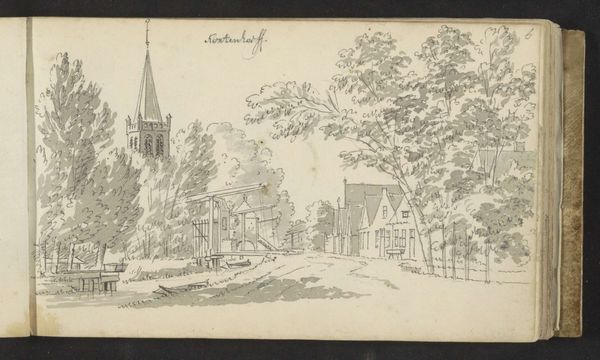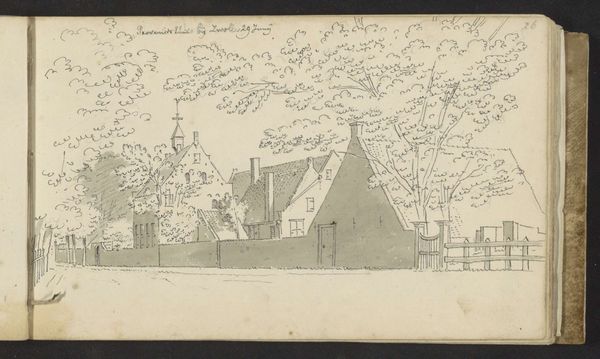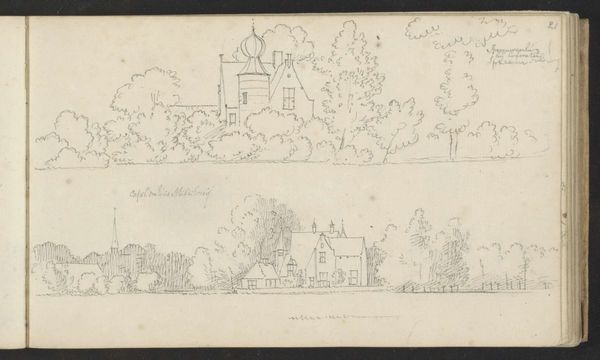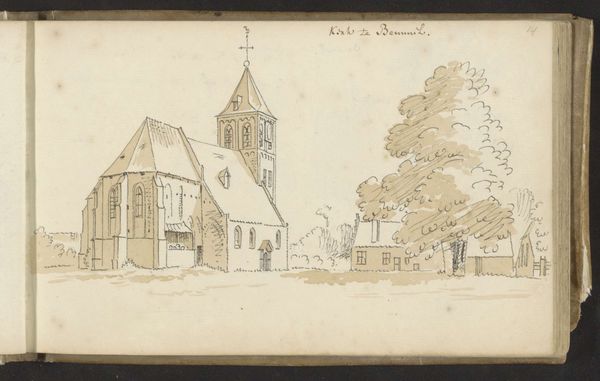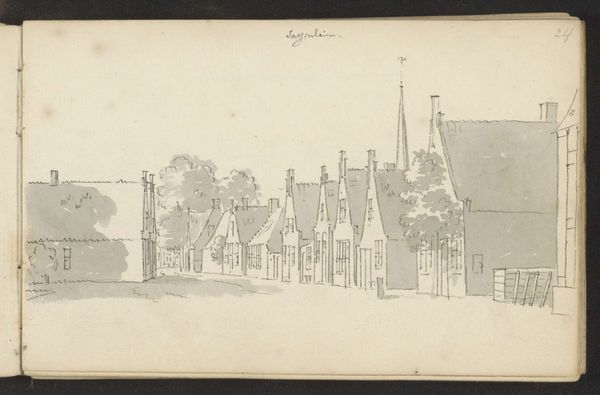
drawing, paper, ink
#
drawing
#
quirky sketch
#
dutch-golden-age
#
pen sketch
#
sketch book
#
landscape
#
paper
#
personal sketchbook
#
ink
#
sketchwork
#
pen-ink sketch
#
pen work
#
sketchbook drawing
#
cityscape
#
storyboard and sketchbook work
#
sketchbook art
Copyright: Rijks Museum: Open Domain
Editor: Here we have "Dorpsgezicht te Bunschoten," or "Village View at Bunschoten," a pen and ink drawing on paper, likely from around 1732 to 1736, by Abraham de Haen the Second. It's a charming, quick sketch. I'm struck by its simplicity, almost like a memory fading at the edges. What cultural echoes do you hear when you look at this piece? Curator: Indeed, this isn't just a depiction of a village; it's a carefully constructed visual statement. Consider the prominent church spire. It pierces the skyline, a clear indication of the central role religion played in daily life. Notice how it almost dwarfs the surrounding buildings, signifying not just spiritual authority but also perhaps social order. Does that resonate with how you view such symbols now? Editor: I guess so, but I also see the ordinary houses, the trees. They seem just as important in the composition. It doesn't feel overtly religious. Curator: Precisely! And that's where it becomes really interesting. It’s not simply a religious statement but a carefully balanced image of worldly and spiritual life. What do you think the artist intended by presenting both so equally? Are they in harmony, or is there perhaps some tension? Consider the cultural climate of the time – the Dutch Golden Age was a period of both immense prosperity and strong Calvinist values. Editor: That makes sense. So the drawing embodies those tensions. The church tells you one thing, while daily life fills the foreground. What do you think the cultural memory would be of this quietness, this steadiness? Curator: Perhaps it’s a nostalgic glimpse into a simpler time, a time when community and faith were visually intertwined. The sketchbook quality gives it an intimacy, as if we are peering directly into the artist’s memory, sharing in his understanding of 'home'. Editor: It’s like a visual poem, quietly powerful. Thanks; I see so much more in it now. Curator: My pleasure. Discovering these layers of meaning, piecing together cultural and historical context, that’s where the real journey lies.
Comments
No comments
Be the first to comment and join the conversation on the ultimate creative platform.
